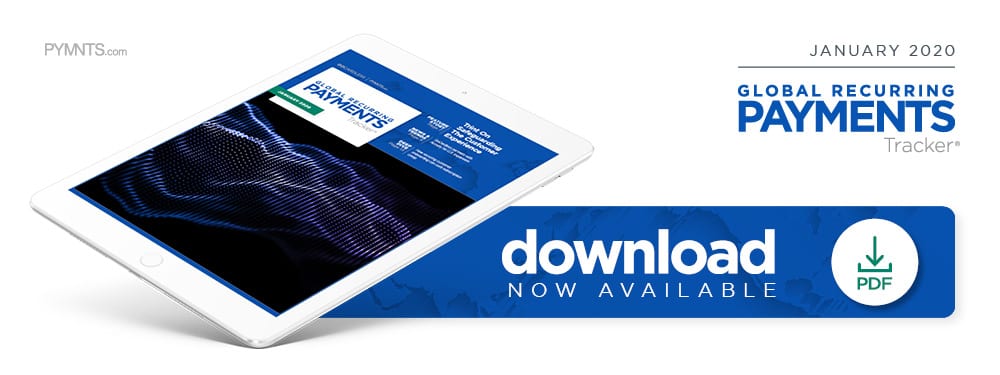Deep Dive: How Securing Customer Onboarding Can Curb Negative Option Billing Subscription Creep

The subscription eCommerce market is a favorite among consumers and businesses, growing more than 100 percent annually for the past five years. Subscription’s promises of recurring revenue streams for companies and convenience for customers offer powerful benefits, but an unwelcome group is also subscribing to such services: fraudsters.
This increasingly sophisticated group poses a growing and costly headache to those who value the model, forcing businesses to spend billions on fraud-fighting technologies. Bad actors often exploit cardholders who may forget about subscriptions they once ordered, fail to check statements for unusual transactions or simply overlook small charges that eventually add up.
Subscription businesses must protect their systems from fraud to prevent churn and reassure potential customers, with the latter being particularly important given that fear of scams is one of new customers’ top concerns. Preventing fraud with seamless and secure onboarding solutions is key. Safeguards that are too restrictive could turn off potential customers, while those that are too weak could cause heavy financial losses.
This month’s Deep Dive examines the critical and delicate balancing act companies face to gain new subscribers while pushing back against account and subscription payment fraud. The Deep Dive also highlights innovative fraud detection technologies that FinTechs and other businesses are employing — such as artificial intelligence (AI), machine learning (ML) and dynamic biometrics — to thwart criminals.
The Budget-Busting Impact of Continuity Subscription Scams
Offering streaming media subscriptions or gym memberships to customers for monthly or yearly payments gives companies recurring revenue streams they can bank on to better grow their businesses, manage budgets and plan ahead. Customers, on the other hand, enjoy the convenience of getting what they want, when they want at relatively low costs. This can make the space ripe for fraudsters, however.
Deceptive and unwanted credit and debit charges cost U.S. cardholders more than $14 billion annually, or $213 each, according to one study. The U.S. Federal Trade Commission (FTC) processed 1.4 million fraud reports in 2018, resulting in $1.48 billion in losses while global fraud losses cost businesses $1.5 trillion a year.
Digital crooks use several tactics to snag customers’ funds, such as subscription creep, negative option or continuity billing. The latter method works by sending a cardholder an email, advertising the next-generation Samsung or iPhone for just $1, for example. All the consumer needs to do is fill out a survey, at the end of which the page asks for a credit card number to pay for the $1 phone. The cardholder readily complies, neglecting the fine print that signs them up for a monthly subscription to a product or service they do not want or need. Then a barely noticeable $5 or $10 charge shows up on the cardholder’s statement the next month. These costs often seem minor until the accumulated charges get out of control.
Many victims of this type of fraud do not get assistance from banks, which will not typically investigate charges below $50. This makes it easy for fraudsters to fly under the radar and rack up illegal charges for some time before being caught.
Consumers are advised to call billers or card providers directly to stop such charges. They can also cancel the affected cards, but that may not stop the scams. Many big companies that are eager to provide uninterrupted services to customers automatically update their bills to charge new credit cards with the same personal data of the prior cards, giving criminals free rein.
Negative option billing is popular among companies offering subscriptions or memberships. It entices customers with samples or free trials in exchange for customers’ credit card details, claiming they will bill consumers after the trials end. The companies are betting — often correctly — that cardholders will forget to end their services after the trial periods, resulting in continuous billing for offerings they no longer want.
Data-Rich Defenses
Carefully reading the fine print, disputing charges with card providers or installing apps that alert users to recurring charges are sensible, low-tech options to combat scams and fraud. Fraud gets more advanced every day, with machines being responsible for many recent eCommerce scams. The PYMNTS Fraud Decisioning Playbook reported that approximately 20 percent of accounts opened for the more than 1.3 billion transactions that occurred between July and September 2019 were the result of massive bot attacks.
Firms are turning to hybrid solutions relying on ML and AI to combat related criminal activities. These advanced learning technologies replace businesses’ reactive, rules-based systems that often create false positives, identifying legitimate users as fraudulent ones. This can frustrate customers and cost businesses $10 billion a year.
Advanced ML tools identify fraudsters by analyzing usage patterns and flagging anomalies during onboarding in real time. They collect large swaths of data from customers’ devices, social media accounts and other sources and seamlessly integrate that information into existing operating systems, saving businesses time and money. This richer, more nuanced user profile makes it easier for systems to flag deviations in spending behavior, such as a sudden, big-ticket purchase from a store a user never previously patronized.
Going Beyond Typical Biometrics and Blockchain
Some companies are combatting fraud with biometrics, turning to facial recognition technology that recognizes individuals’ unique vein patterns as well as iris recognition and retina scanning. Others are rolling out blockchain technologies to provide users with even greater personal data security. These offerings allow FinTechs and banks to store each customer’s digital records on a shared ledger during the onboarding and validation processes.
Cybercriminals will undoubtedly reveal new ways to scam companies and customers as 2020 unfolds, and with churn rising, companies must find smarter ways to lure new customers. Forward-looking companies need to think outside the subscription box to find the right digital defenses to stop fraudsters.

